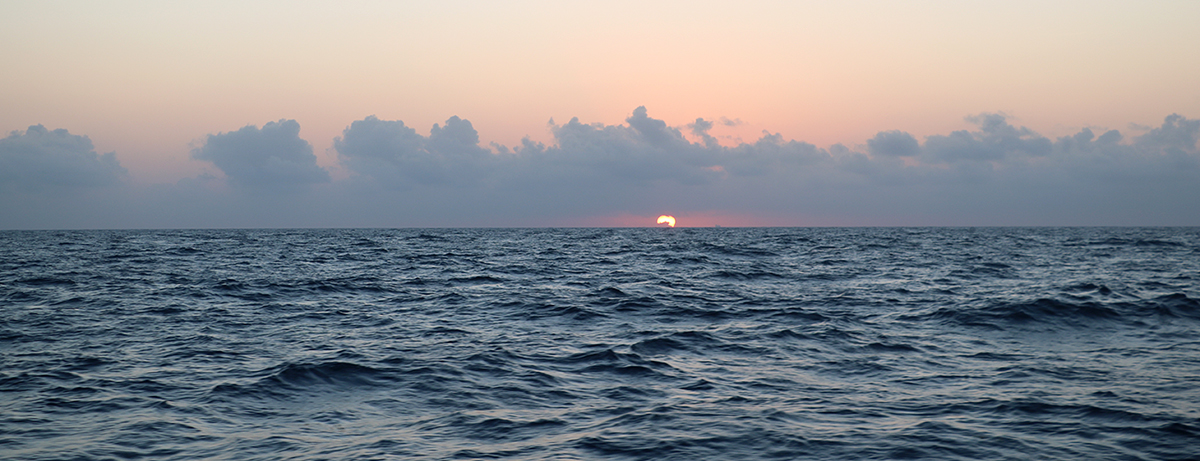Texas A&M Awarded $5.4 Million From National Academies Gulf Research Program
Texas A&M oceanographer Dr. Steven DiMarco will lead the new research consortium.
Mar 22, 2022

The Gulf Research Program (GRP) of the National Academies of Sciences, Engineering, and Medicine has announced $5.4 million in research funding awarded to Texas A&M University from the Understanding Gulf Ocean Systems (UGOS) program.
The funding will establish the Gulf Consortium for Offshore Risk Reduction Engaging Stakeholders (GulfCORES), which will be led by Dr. Steven DiMarco, professor in the Department of Oceanography at Texas A&M and team leader for ocean observing at Texas A&M’s Geochemical and Environmental Research Group (GERG).
GulfCORES will complement and enhance existing modeling and observational capabilities by providing adaptive sampling observations from glider, float, and drifter platforms, DiMarco said. The consortium will also actively engage stakeholders and industry to ensure sustainable transitions to operations that support end-users. DiMarco said that GulfCORES will execute an observational program to support numerical modeling, and develop a plan to incorporate study outputs into existing operational agency and industry activities.
“Our team is excited about the opportunity to work with the National Academies GRP and the other consortia on this project,” he said. “Because of the decades-long experiences in providing observations that are critical to accurate and reliable forecasts, we have a dream team positioned to improve the well-being of the Gulf of Mexico community. When coupled with Texas A&M’s unique relationship with offshore industries, I am confident that our work will lead to a safer and more sustainable Gulf.”
The Texas A&M-led project is one of three awarded as part of UGOS’ third phase (UGOS-3), and the three consortia will work collaboratively to apply existing and emerging data to improve operational forecasting of the Gulf of Mexico ocean dynamics, including the Loop Current and its eddies.
“One of the Gulf Research Program’s core priorities is to make data-rich scientific information available to decision-makers in the Gulf,” said Donald F. Boesch, National Academies senior scholar. “I am confident that our UGOS program will result in major advances in the practical use of scientific understanding of the highly dynamic Gulf of Mexico and how it is changing in our warming world.”
GulfCORES will be an international consortium, including scientists from eight partner institutions: Rutgers University, University of Miami, University of South Florida, University of Southern Mississippi, Woods Hole Group Inc., Texas A&M University - Corpus Christi Harte Research Institute, Universidad Nacional Autonoma de Mexico (UNAM, Puerto Morelos, Mexico), and Ensenada Center for Scientific Research and Higher Education (CICESE, Ensenada, Mexico), and four collaborating institutions: Gulf of Mexico Coastal Ocean Observing System (GCOOS), Ocean Sierra, LLC, CODAR, Inc., and Shell Exploration Company.
Co-principal investigators for GulfCORES are: Dr. Tony Knap and Dr. Kerri Whilden, Texas A&M GERG; Felimon Gayanilo, Texas A&M University - Corpus Christi; and Dr. Jorge Brenner and Dr. Barbara Kirkpatrick, GCOOS.
Enhanced predictions of Gulf of Mexico currents and eddies will help avoid risky conditions for oil drilling and production, thereby reducing risks to offshore workers, UGOS said. Improving operational forecasting will also help improve oil spill response, weather forecasting, and the sustainable management of the Gulf’s rich fisheries resources.
Deep and fast-moving, the Loop Current is of interest to industry and weather forecasters, as well as to the scientific community, due to sometimes unpredictable changes in its velocity, temperature, and position. Its deep, warm eddies can supply heat to tropical storms moving over them, allowing the storms to rapidly intensify. UGOS scientists said this was apparently the case last year when Hurricane Ida quickly grew from a Category 1 to a Category 4 hurricane before it made landfall. UGOS noted that if the Loop Current had behaved differently during the Deepwater Horizon oil spill, it could have pushed oil beyond the Gulf, causing damage to a much larger area.
Along with the Texas A&M-led consortium, the two additional new UGOS-3 projects are: Advancing Gulf of Mexico Operational Forecasting with Application to Fisheries, Industry Safety, and Natural Hazards (GOFFISH) – led by Florida State University; and, An Operational System Using Real-time Subsurface Observations to Improve Loop Current Forecasts – led by the Woods Hole Oceanographic Institution.
“Thanks to the incredible and ongoing work from the UGOS investigators, we have a solid foundation of knowledge on the Loop Current — with more new data and discoveries happening every day,” said Michael Feldman, GRP senior program officer. “The UGOS-3 researchers will build on that understanding to have a lasting impact on forecasting accuracy and capability, supporting both end users and the communities that live and rely on the Gulf of Mexico.”
The National Academies’ Gulf Research Program is an independent, science-based program founded in 2013 as part of legal settlements with the companies involved in the 2010 Deepwater Horizon disaster. It seeks to enhance offshore energy system safety and protect human health and the environment by catalyzing advances in science, practice, and capacity to generate long-term benefits for the Gulf of Mexico region and the nation. The program has $500 million for use over 30 years to fund grants, fellowships, and other activities in the areas of research and development, education and training, and monitoring and synthesis.
By Leslie Lee, Texas A&M College of Geosciences

